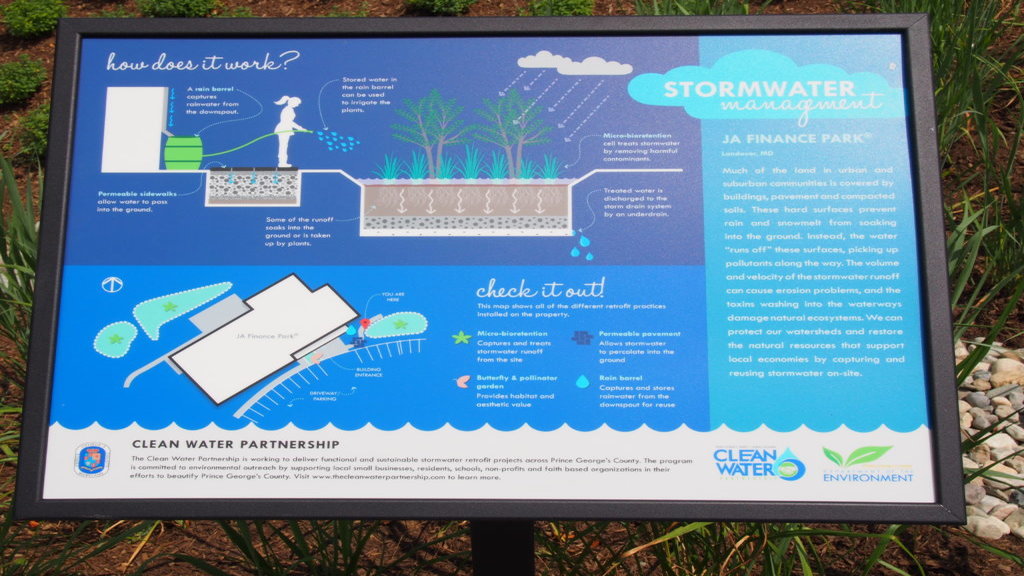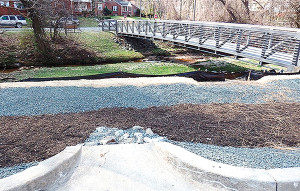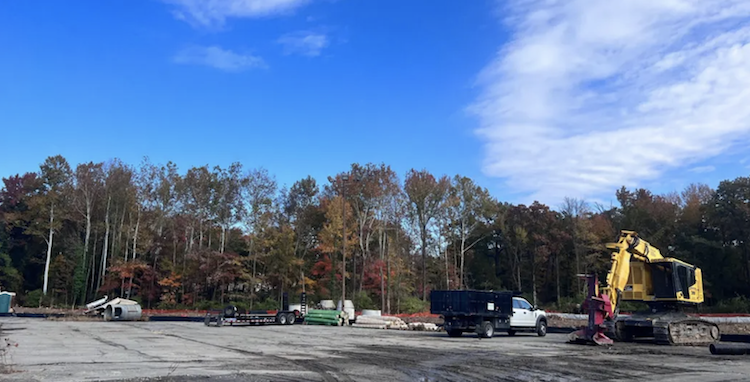Prince George’s County in Maryland has teamed up with consultant Corvias Solutions to implement an ambitious plan for infiltrating stormwater into the ground.
The Journal of Light Construction
In coastal communities, stormwater management is a hot political topic and a tough technical challenge. Redirecting rainwater has always been an engineering problem; but as stormwater runoff becomes an increasingly troubling environmental issue, the old methods of managing runoff (storm drains and pipes) are no longer an accepted solution. These days, Low Impact Development (LID), based on “Best Management Practices” (BMPs), is the state of the art.
Prince George’s County, in Maryland, is a densely populated urban and suburban area where stormwater runoff directly impacts the sensitive and endangered Chesapeake Bay. In Prince George’s, Low Impact Development is a given—but how it is to be accomplished is still a work in progress. The county’s latest maneuver is to partner up with national consultant Corvias Solutions, to implement an ambitious 10-year county-wide effort to replace outdated hardscape with new soft features intended to allow rainwater to soak into the earth instead of flooding local streams and bays.
From the Bay Journal report: “Reducing nutrient and sediment pollution to meet mandates imposed by Maryland’s Bay watershed implementation plan could cost the county more than $2 billion by 2025 if it relied on conventional methods for upgrading its stormwater system, said Adam Ortiz, director of the county Department of the Environment. By teaming up with the Rhode Island-based company [Corvias Solutions] and focusing more on ‘green infrastructure’ than on replacing and expanding existing concrete structures, the county hopes to save its taxpayers a bundle—though it still promises to be a very expensive undertaking. Faced with a 2025 deadline to complete needed pollution-reduction measures, the partners hope to finish retrofitting the 15,000 acres of impervious surface for about $1 billion. That’s half of what the county figured it would cost if it were to do it on its own.”

Helping to coordinate the public-private effort is a new website launched by the county, the “Clean Water Partnership.” Here you can learn about the big picture—but even more interesting, the website serves as an entry portal for contractors who may want to participate. According to the website, “The CWP is focused on creating opportunities for county based small businesses and county based minority businesses to execute the work.” The website’s “Procurement” page says the county is actively recruiting businesses with capabilities in landscaping, concrete flatwork, installation of precast structures, and site work, as well as suppliers of stone, pavers, porous concrete, soil, rain barrels, mulch, plant materials, trucking and hauling, equipment supply, and maintenance.









